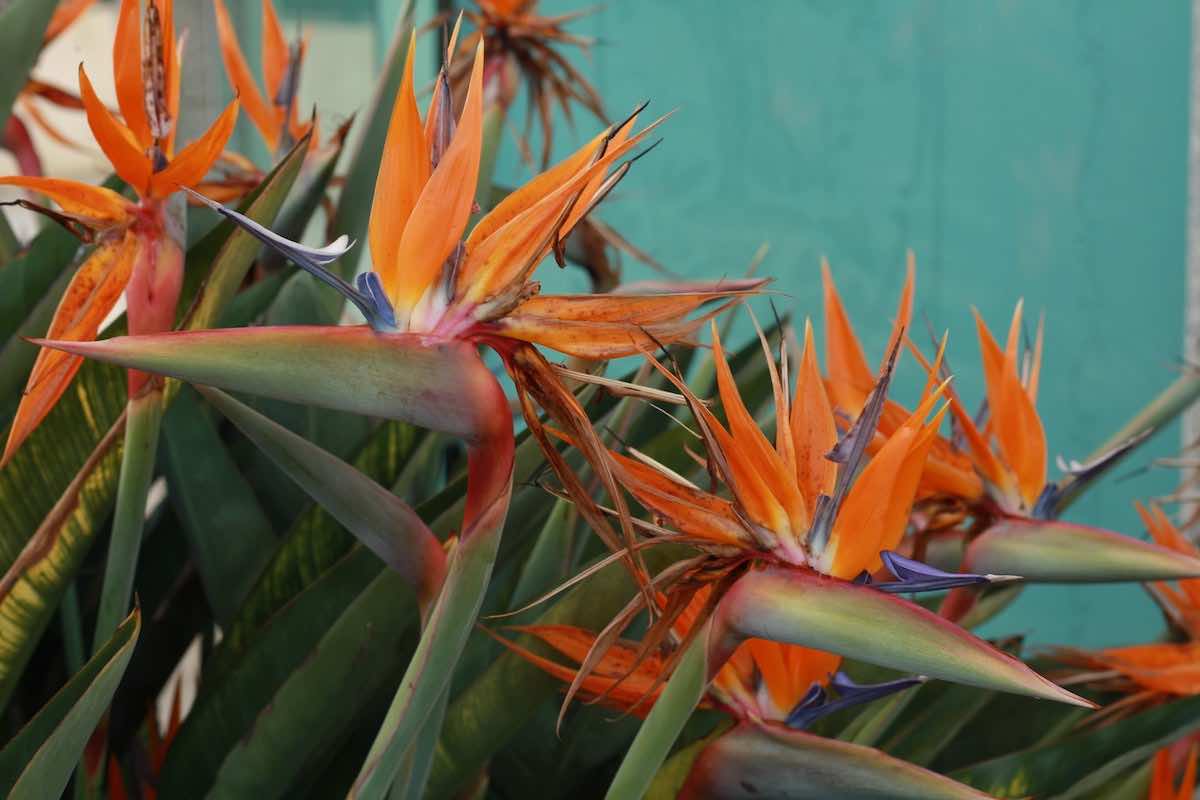
The Bird of Paradise is a truly fascinating plant that captivates with its exotic beauty and unique characteristics. With its vibrant colors, intricate patterns, and stunning shapes, it is no wonder why it has become a favorite among plant enthusiasts and collectors around the world. But there is so much more to this extraordinary plant than meets the eye. In this article, we will uncover 15 astounding facts about the Bird of Paradise that will leave you in awe of its remarkable nature. From its origins in the tropical forests of Papua New Guinea to its unusual pollination methods, you will discover the incredible adaptations and secrets that make this plant a true marvel of the natural world. So, let’s dive in and explore the intriguing world of the Bird of Paradise!
Key Takeaways:
- The Bird of Paradise is a stunning and unique bird known for its vibrant plumage, elaborate courtship rituals, and crucial role in rainforest ecosystems. It has inspired legends and cultural significance throughout history.
- With over 40 species, the Bird of Paradise is a master mimic, monogamous, and highly territorial. Its extraordinary beauty and diverse behaviors highlight the importance of preserving nature’s wonders.
The Bird of Paradise has vibrant and exotic plumage.
The Bird of Paradise is renowned for its stunning and vibrant plumage, with each species unique in its colors and patterns. Their feathers display a wide range of hues, including vibrant blues, brilliant yellows, deep oranges, and striking reds, making them one of the most visually captivating birds in the world.
There are over 40 species of Bird of Paradise.
The Bird of Paradise family consists of more than 40 different species, each with its own distinct characteristics and behaviors. These species can be found primarily in the rainforests of New Guinea and surrounding islands, along with certain parts of Australia and Indonesia.
The Bird of Paradise has unique courtship rituals.
Male Birds of Paradise are famous for their elaborate courtship displays to attract females. They perform intricate dances, flapping their wings, puffing up their chests, and showcasing their ornate feathers in a mesmerizing spectacle. These rituals often involve unique vocalizations and vibrant displays, making them truly captivating to witness.
The Bird of Paradise is known for its unusual shape.
With their elongated bodies, extravagant plumes, and elongated tail feathers, Birds of Paradise have a distinct and unusual shape that sets them apart from other birds. Their unique appearance adds to their allure and has made them a symbol of beauty, elegance, and exoticism.
The Bird of Paradise is a master mimic.
Some species of Bird of Paradise have the remarkable ability to imitate the sounds of other animals in their surroundings. This skill not only helps them communicate but also assists in attracting mates and defending their territories.
The Bird of Paradise is monogamous.
Once male Birds of Paradise find a mate, they are known to form monogamous partnerships for life. They remain loyal to their chosen partner and continue to perform their elaborate courtship displays even after mating to strengthen their bond.
Some Bird of Paradise species build unique courtship structures.
Male Birds of Paradise in certain species go beyond their dance performances and actually construct elaborate structures to impress females. These structures often include branches, leaves, and other materials to create a visually appealing display area where they showcase their ornate feathers and perform their courtship rituals.
The Bird of Paradise has an interesting diet.
The diet of Birds of Paradise primarily consists of fruits, nectar, insects, and small vertebrates. Some species also have a particular affinity for consuming toxic insects, which they are able to digest due to special enzymes in their system.
The Bird of Paradise has evolved to be arboreal.
Due to the dense rainforest environment they inhabit, Birds of Paradise have adapted to an arboreal lifestyle. They spend most of their time high up in the treetops, using their specialized feet and claws to cling onto branches and perform their aerial displays.
The Bird of Paradise has a unique mating dance.
The mating dance of the Bird of Paradise is not only visually stunning but also highly intricate. Each species has its own specific dance movements, postures, and vocalizations, which are learned and passed down from one generation to another.
The Bird of Paradise plays a crucial role in rainforest ecosystems.
As pollinators, Birds of Paradise contribute to the reproduction of various plant species in their habitat. Their vibrant feathers attract insects and other pollinators, aiding in the dispersal of pollen and the regeneration of plant life.
The Bird of Paradise males greatly outnumber females.
In many species, the population of male Birds of Paradise far exceeds that of females. This fierce competition among males for mates has fueled the evolution of their extravagant plumage and elaborate courtship rituals.
The Bird of Paradise is highly territorial.
Male Birds of Paradise fiercely guard their territories, which often include specific trees or branches within their habitat. They use their striking displays and calls to deter rival males and defend their breeding grounds.
The Bird of Paradise has inspired legends and cultural significance.
Throughout history, Birds of Paradise have captivated human imagination and have been revered as symbols of beauty and mystical powers. They have been featured in folklore, art, and cultural ceremonies of the indigenous peoples of the regions they inhabit.
The Bird of Paradise is an example of nature’s beauty and diversity.
The incredible array of species, vibrant plumage, and intricate behaviors of the Bird of Paradise serve as a testament to the awe-inspiring diversity found in nature. Their existence reminds us of the importance of protecting and preserving the environments that these magnificent creatures call home.
Conclusion
In conclusion, the bird of paradise is a truly remarkable plant that never fails to captivate and astonish with its unique beauty. With their vibrant colors, exotic shapes, and intricate patterns, these plants are a testament to the wonder and diversity of nature. From their fascinating evolution to their ability to attract pollinators, the bird of paradise is truly a botanical marvel. Whether used as a decorative plant in gardens or admired in their natural habitat, these plants are sure to bring joy and fascination to anyone fortunate enough to encounter them.
FAQs
Q: How tall can a bird of paradise plant grow?
A: Bird of paradise plants can grow up to 6 feet tall, depending on the species and growing conditions.
Q: Do bird of paradise plants require a lot of care?
A: While bird of paradise plants do require some care, they are generally low maintenance. They thrive in bright, indirect light and need regular watering and well-drained soil.
Q: Can I grow a bird of paradise indoors?
A: Yes, you can grow bird of paradise plants indoors as long as they receive enough light. Place them near a window where they can get at least 6 hours of bright, indirect light each day.
Q: How often do bird of paradise plants bloom?
A: Bird of paradise plants typically bloom once or twice a year, usually during the warm summer months.
Q: Are bird of paradise plants toxic to pets?
A: Yes, bird of paradise plants are toxic to pets if ingested. It is important to keep them out of reach of cats, dogs, and other animals.
Was this page helpful?
Our commitment to delivering trustworthy and engaging content is at the heart of what we do. Each fact on our site is contributed by real users like you, bringing a wealth of diverse insights and information. To ensure the highest standards of accuracy and reliability, our dedicated editors meticulously review each submission. This process guarantees that the facts we share are not only fascinating but also credible. Trust in our commitment to quality and authenticity as you explore and learn with us.


